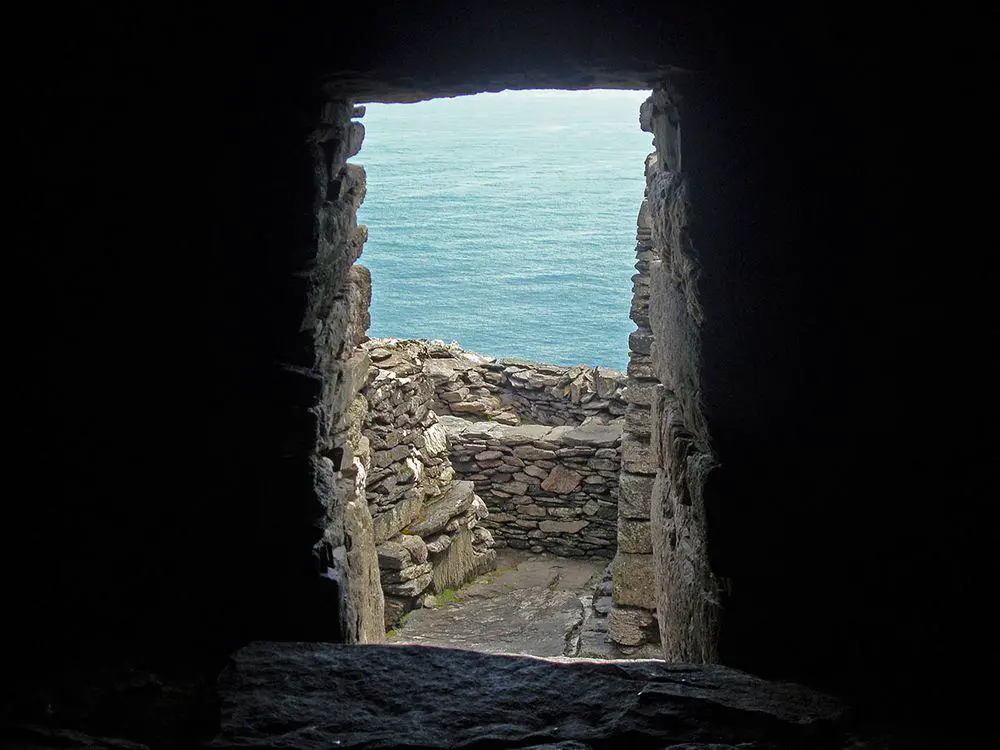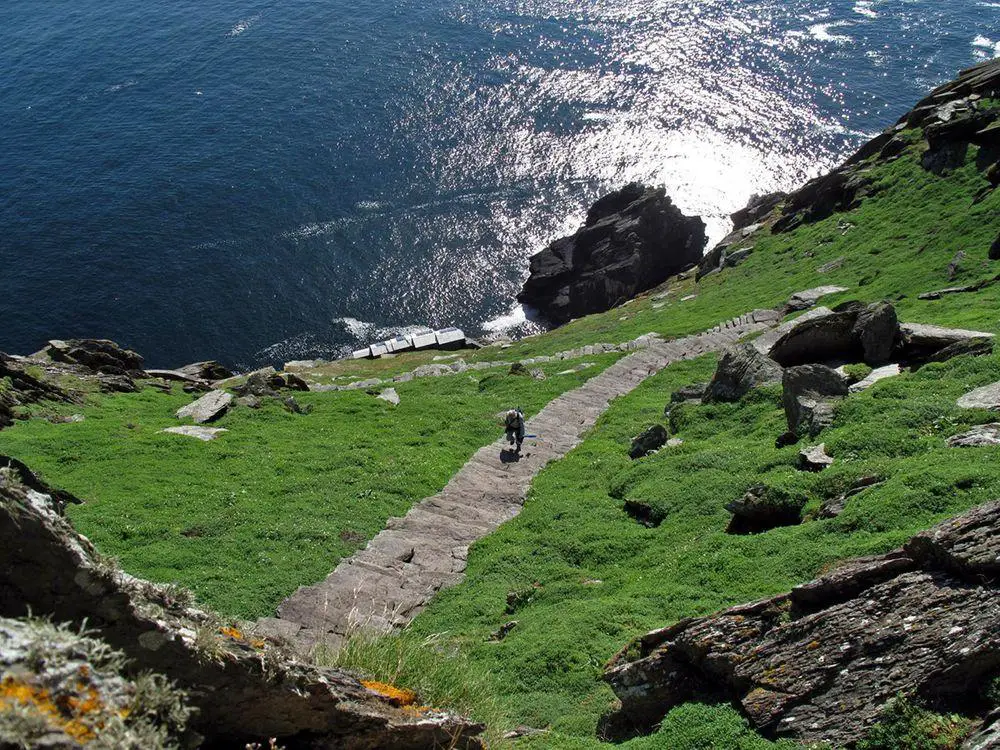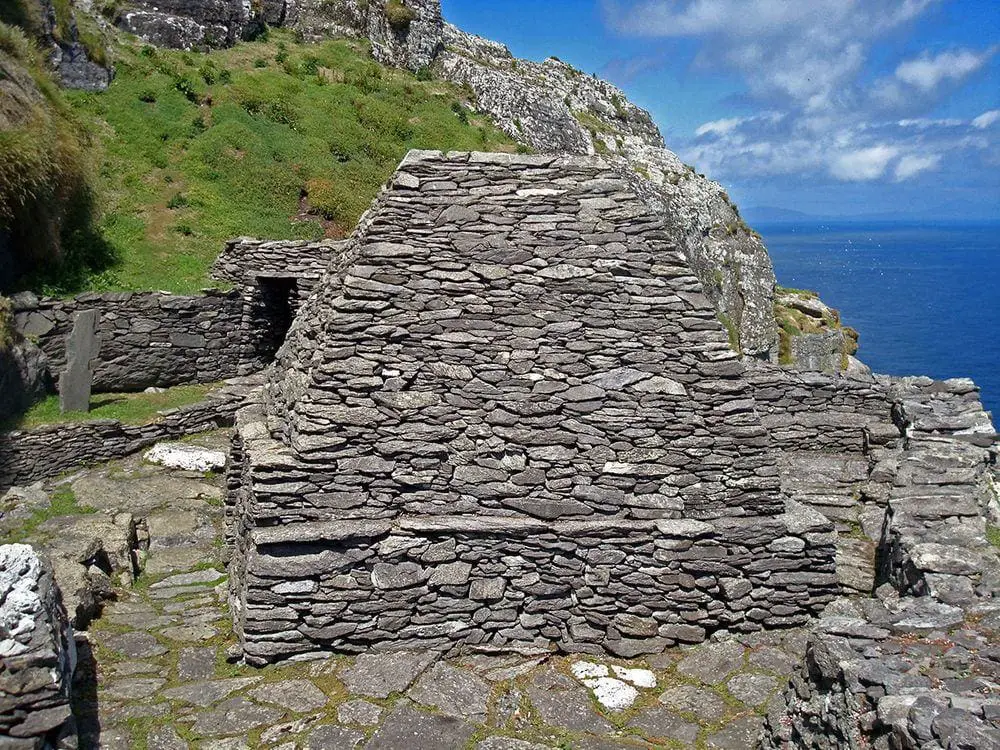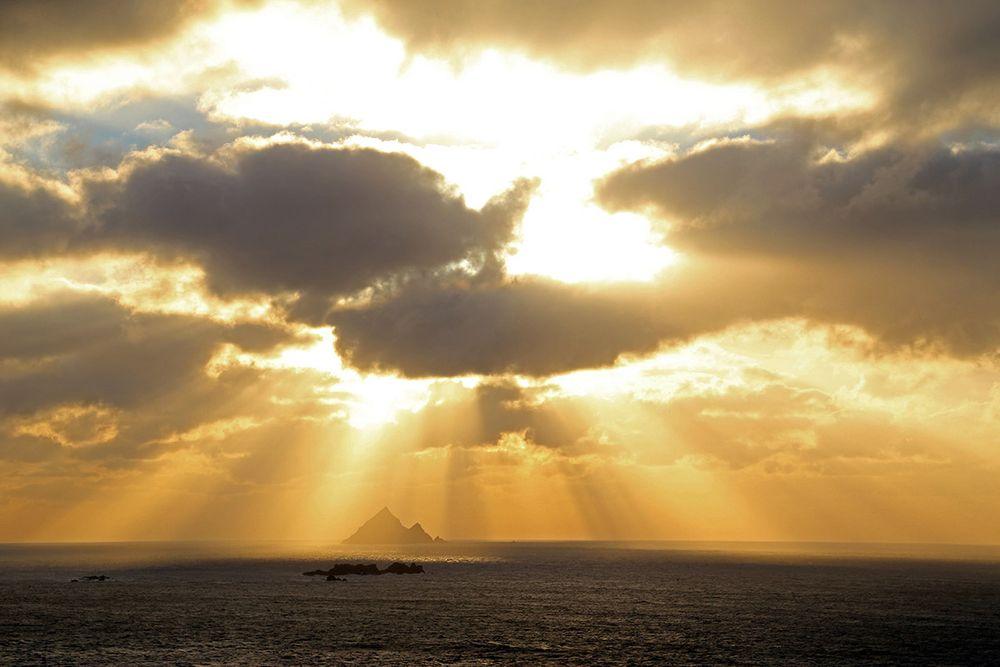Christian monasteries 🢔 Religious architecture 🢔 Archaeological wonders 🢔 Categories of wonders
Wonder
Skellig Michael monastery
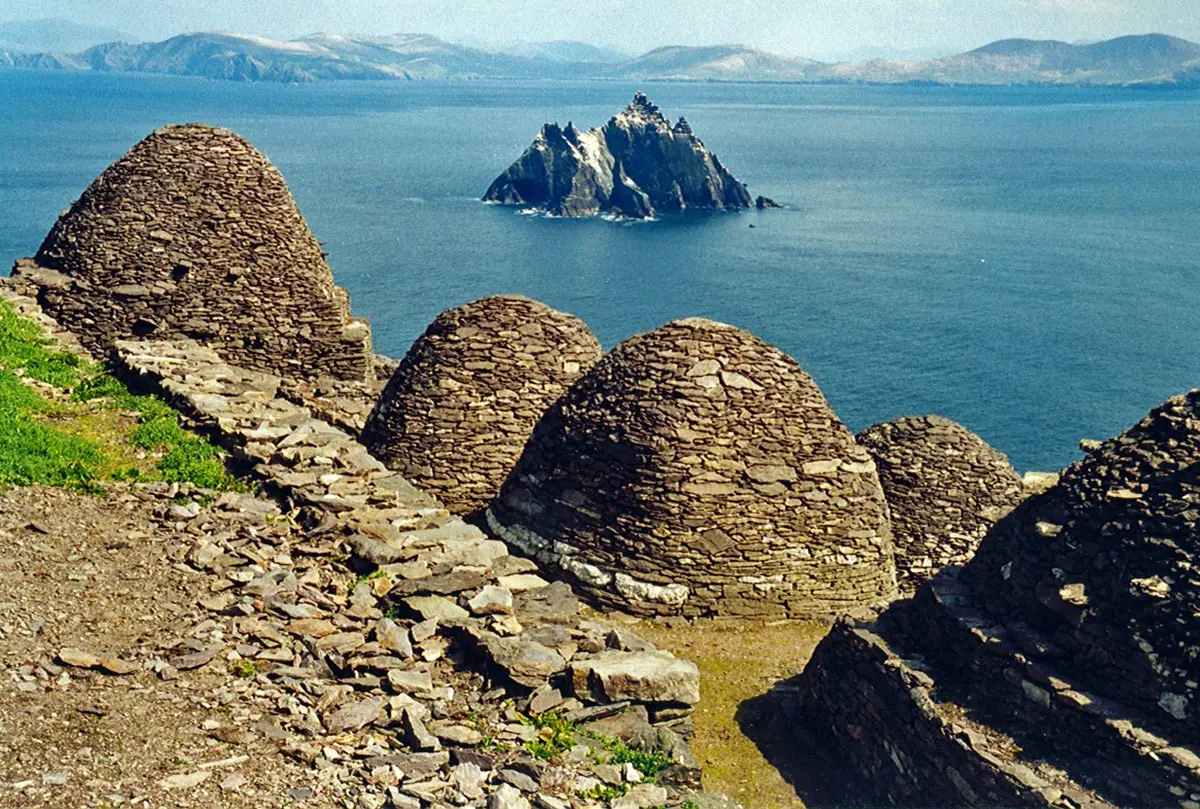
 In short
In short
A true gem of medieval Ireland is the monastery on Skellig Michael. Early Christian monasteries are known to be built in weird and almost inaccessible places but this one is very special – built on a steep rock rising from a stormy sea at the far western borders of the medieval Christian world. It seems improbable now but monks managed to live here for a long time between the 7th and 13th centuries!
 60.7%
60.7%
GPS coordinates
Name in Irish
Founded
Year of construction (church)
Order
Branch of Christianity
UNESCO World Heritage status
Map of the site
If you see this after your page is loaded completely, leafletJS files are missing.
 In detail
In detail
History
There is known surprisingly little about the history of this amazing monastery.
Early Middle Ages
Historians are unsure about the founding date of the monastery – it could have happened in the time period between the 6th and 8th centuries. But there are several interesting legends about the island and its importance to Christianity. Thus, according to a written text from the middle of the 13th century, a rock near the coast of Ireland was a place where Saint Michael intervened in the expulsion of dragons from Ireland by Saint Patrick. Well, the place looks as if from fairy tales – thus, why not?
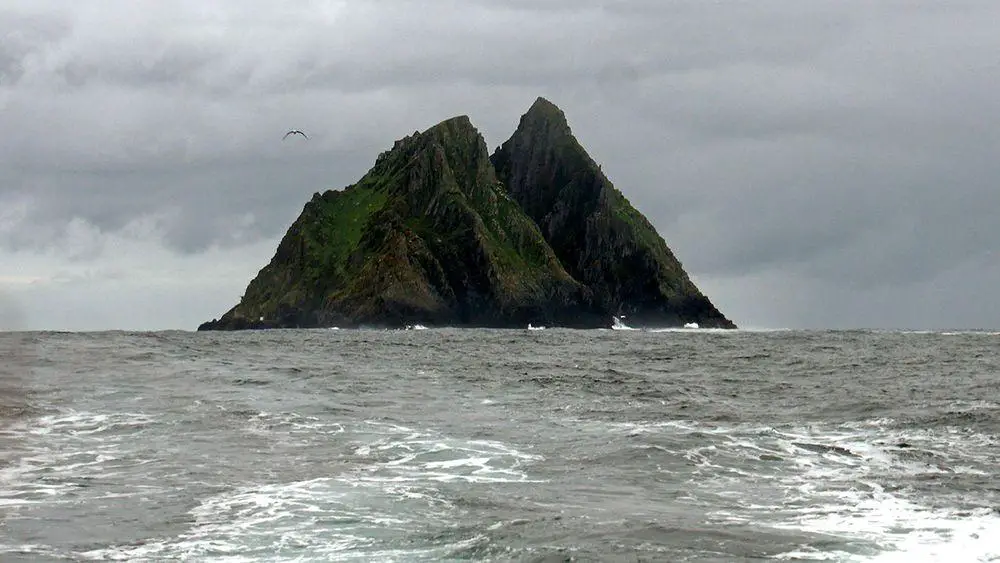
In the first centuries monks lived here austere life, secluded from the small joys and worries of the mainland. This early medieval tradition of hermits was popular also elsewhere – people deliberately withdrew from civilization in order to find union with God.
But the monastery was not isolated. It is known that the monastery was attacked by the Norse in 823. They pillaged the site, it is known that the possible abbot of the monastery – Etgal – was captured and died soon after. Monastery was attacked at least one more time.
Around 950 AD here was built a stone church – Saint Michael’s Church.
Abandonment
Around the 12th century the times changed. Austere hermits were not in fashion anymore – the church was turning to everyday people instead. Also, the climate changed – seas became more stormy and the weather – colder.
In the late 13th – early 14th century monks moved over to the nearby Ballinskelligs monastery – at first only in winter but then altogether. Nevertheless, Skellig Michael was seen as an important and sacred place, pilgrims came here often and monks from Ballinskelligs continued to maintain the buildings on the island.
In 1579 the island became private property, and pilgrimage continued. Then, in the 1820ies the island was purchased by the state and there were built two lighthouses. Construction workers lived in the old monastic cells and often transformed them. By 1826 lighthouses were completed.
The historical value of the monastic complex was recognized in the 1880ies when the Irish Office of Public Works took them over and started to repair and maintain the buildings. Major conservation works took place in the 1970ies – 1980ies, preventing the collapse of terraces and buildings on them.
Description
The monastery of Skellig Michael has one of the most extreme locations for a medieval Christian monastery.
It is perched on the high cliffs of the enormous rock – Skellig Michael island. This small island (21.9 ha) basically is a steep pyramid that towers above the ocean some 12 km from the coast of Ireland. This isolation has helped also to preserve the unique heritage of this site.
Main monastery
Buildings of the monastery are located on narrow, artificially built terraces approximately 180 m above the sea level.
These structures can be accessed by three long stone ladders, ascending from three different landing places located around the island in order to allow landing on the island at different weather conditions. These steps are recently built but in some places can be seen also much older steps.
Buildings are built using a dry stone technique – Irish people were very skilled at this and such structures can withstand the elements for centuries.
Site contains St. Michael’s church, six beehive huts – cells, and two oratories, there are also numerous stone crosses.
The large oratory is the largest medieval building and has the shape of an inverted boat, typical for the early medieval Irish monasteries. Inside is a 3.45 by 2.35 m large room with an entrance door and one small window. The cross of white quartz on the wall of this structure is a later addition.
The smaller oratory has a room that is 2.4 by 1.8 m large room. It was built later than the larger one.
Nearby is a beehive cell – possible latrine of monks.
Site contains six cells – "houses" of monks. At one time there could live some 12 monks and an abbot.
One of the cells is larger than others and may have served as a place of gatherings. Its walls are 1.8 m thick and inside is a 4.6 by 3.8 m large room which is 5 m high. This building has two windows.
To the west from the large oratory are ruins of St. Michael’s Church. This mortared structure partly collapsed in the late 19th century. This rectangular building most likely had a wooden roof. Also, stone details of this church were transported from elsewhere.
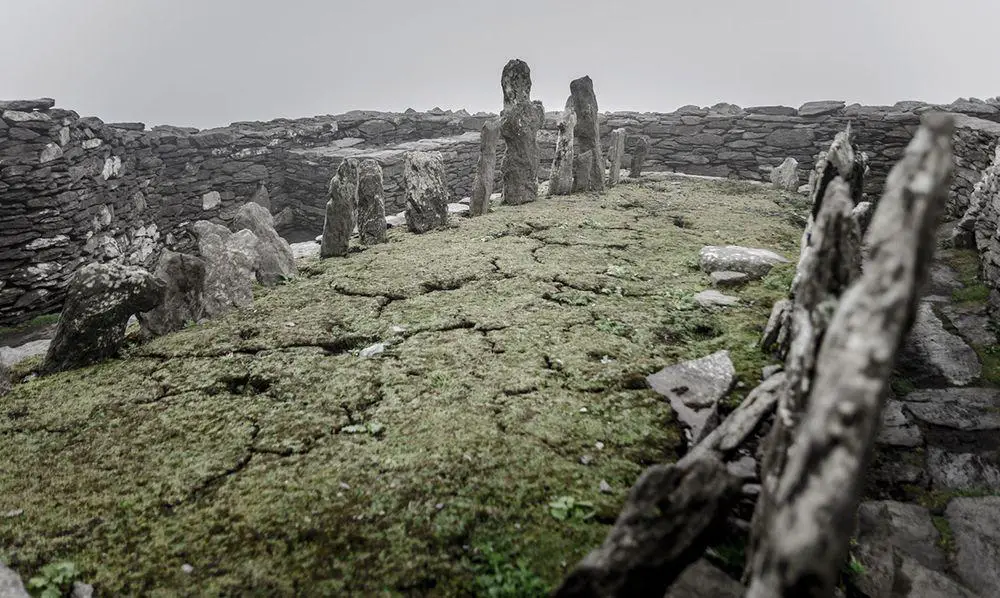
Noticeable feature is the monk’s graveyard. It is a raised 7.3 by 3.2 m large platform, and part of it has collapsed. Here are numerous stone crosses and cross-slabs. In total on the island have been found more than 90 stone crosses and cross-slabs.
Outside the monastery is a smaller structure – purported guesthouse for the visitors.
Interesting is the sophisticated rainwater collection and purifying system. Rainwater collection cisterns are partly under the cells and can hold up to 450 liters of water. There are two more cisterns.
Buildings are on one terrace but two more terraces were built for gardens – upper and lower monks’ gardens, all enclosed with retaining walls. Now, these walls have partly collapsed – also in medieval times monks had to repair them.
South Peak
Some distance from the main monastery, at the South Peak is built an oratory (now only fundament remains) with three terraces. This location can be accessed by steep, at some places – vertical rock-cut steps. If the main monastery is beyond impressive, this inaccessible site is an even more breathtaking, fairy-tale place.
Eyewitnesses report that this site leaves a powerful impression – of course, the location of the monastery is unusual and impressive, but there is something more than this – a special spirituality, a quiet, mighty magical feeling.
References
- Edward Bourke, Alan R. Hayden, Ann Lynch, Skellig Michael, Co. Kerry: the Monastery and South Peak Archaeologic stratigraphic report: excavations 1986 – 2010. Accessed September 28, 2015
 Linked articles
Linked articles
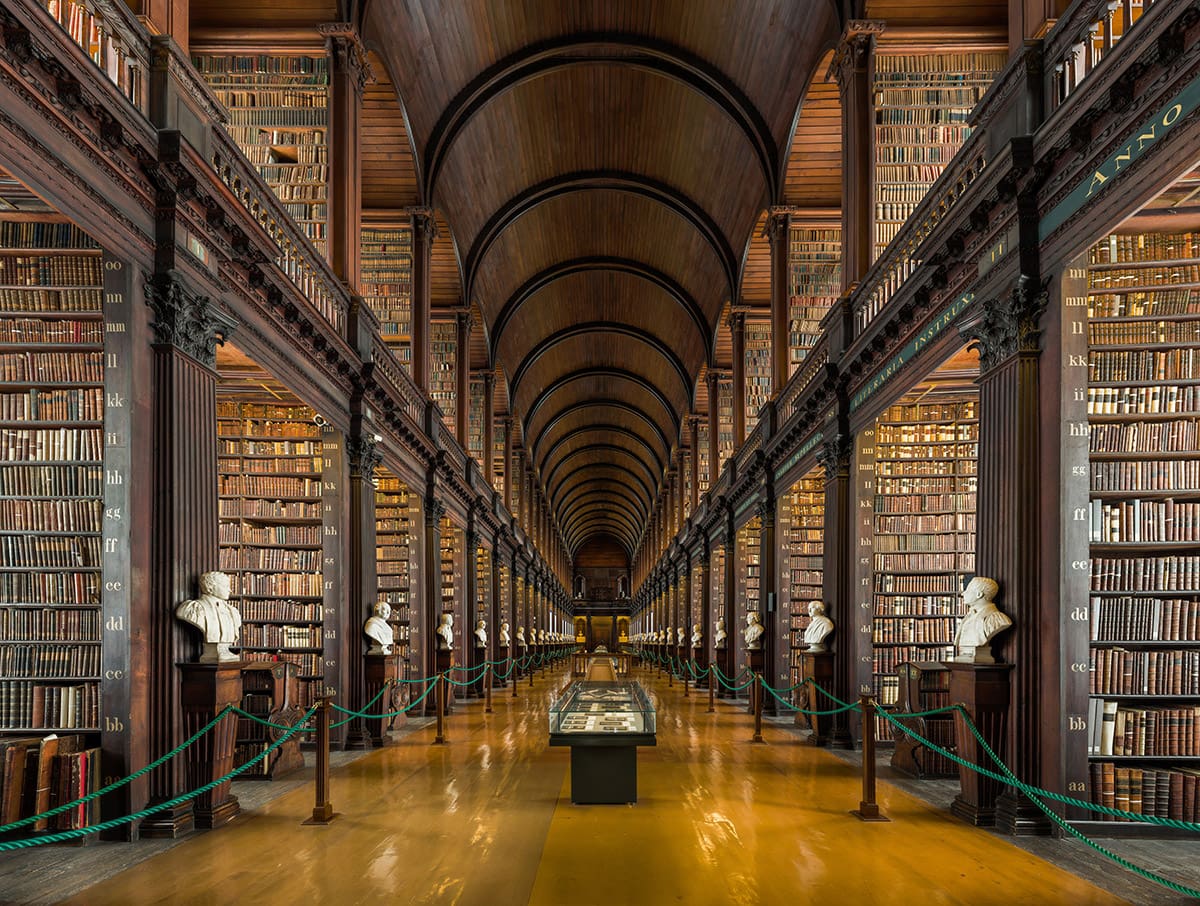
Wonders of Ireland
Regarding the attractions and landmarks Ireland definitely has its own style! There are few other countries in Europe with such a wide array of archaeological and early medieval heritage. In some places this island is virtually packed with multiple unusual monuments – witnesses of bygone times, and bearers of unique traditions in art, architecture, and philosophy.
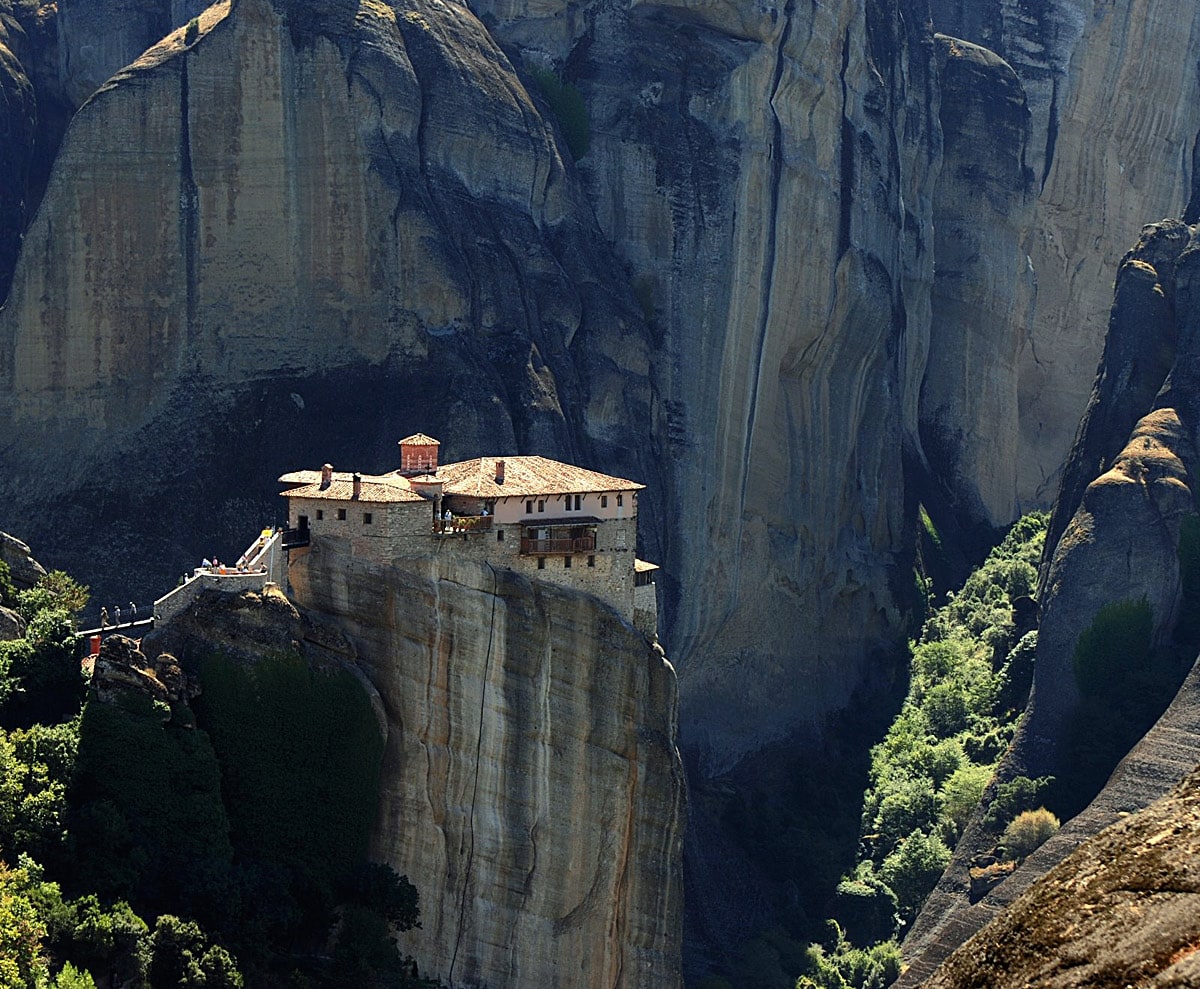
Christian monasteries
Christian monasteries have proven to be a very significant element in history, influencing politics, science, architecture, and art. Often monasteries themselves serve as collectories of written works, art, and crafts.
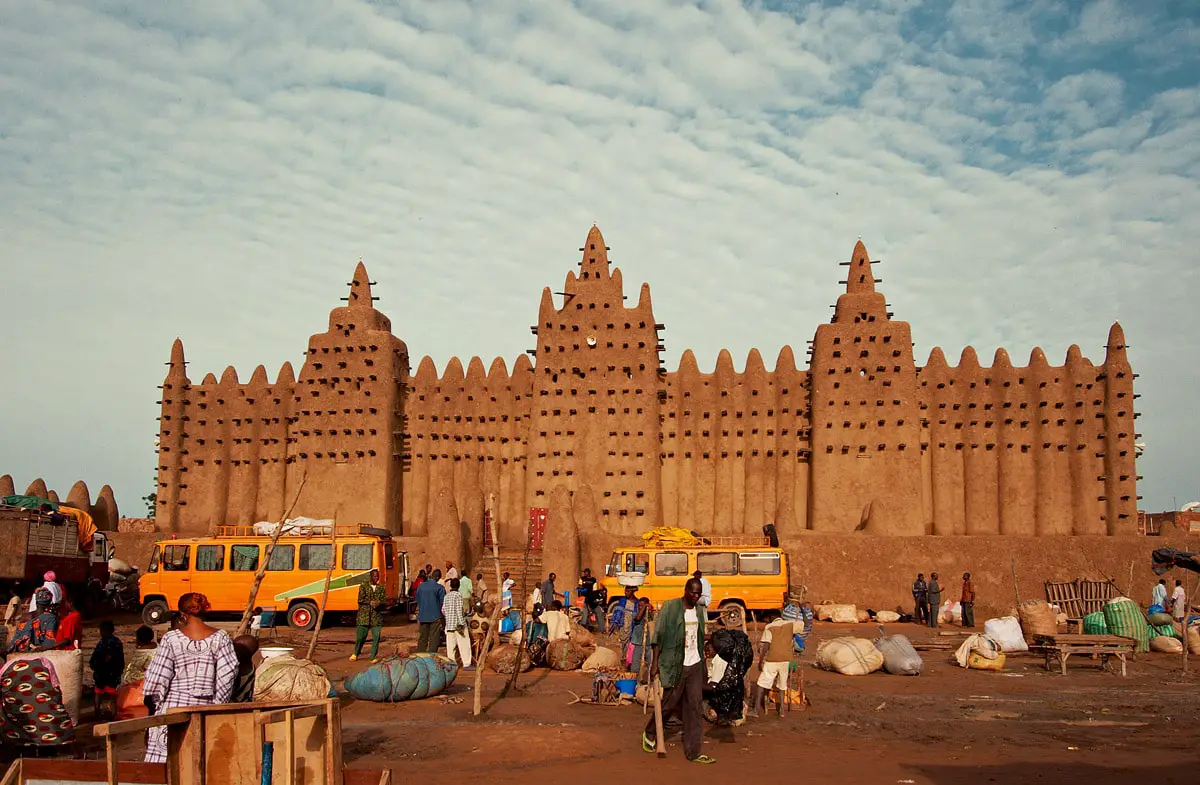
Religious architecture
Since ancient times human talents and skills have been expressed in religious architecture and arts, and traditions and rituals have evolved around pilgrimage sites. Religious buildings represent a major part of the highest achievements in architecture and crafts.
 Recommended books
Recommended books
The Last Monks of Skellig Michael
With the release of the latest Star Wars films, the ancient monastery atop Skellig Michael has enchanted the world with its beautiful vistas and mysterious history. While much has been written about the architectural feats achieved by the monks on the lonely island, little has been discussed about the daily life of the religious hermits. What was it like 1,000 years ago? Why did the monks choose Skellig Michael? What was their spirituality like?
The Skellig Story: Ancient Monastic Outpost
‘Magic that takes you out, far out, of this time and this world.’ George Bernard Shaw, after a visit to Skellig This, is the story of two of the world’s most stunning and unspoilt islands, Skellig Michael and Small Skellig, which lie off the coast of Kerry. Lavelle explores the extraordinary, isolated Early Christian monastic settlement with its stone ‘beehive’ huts.

